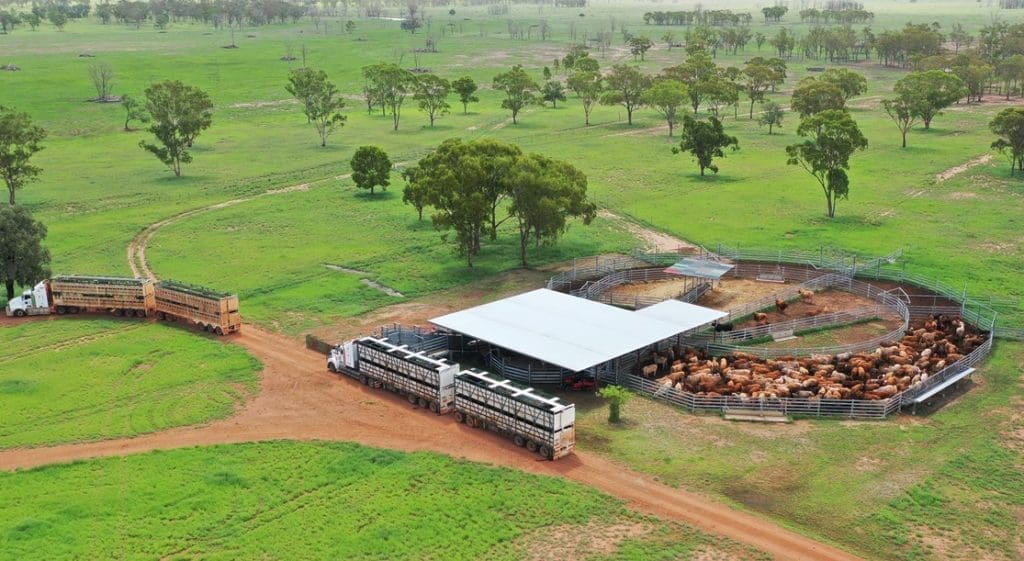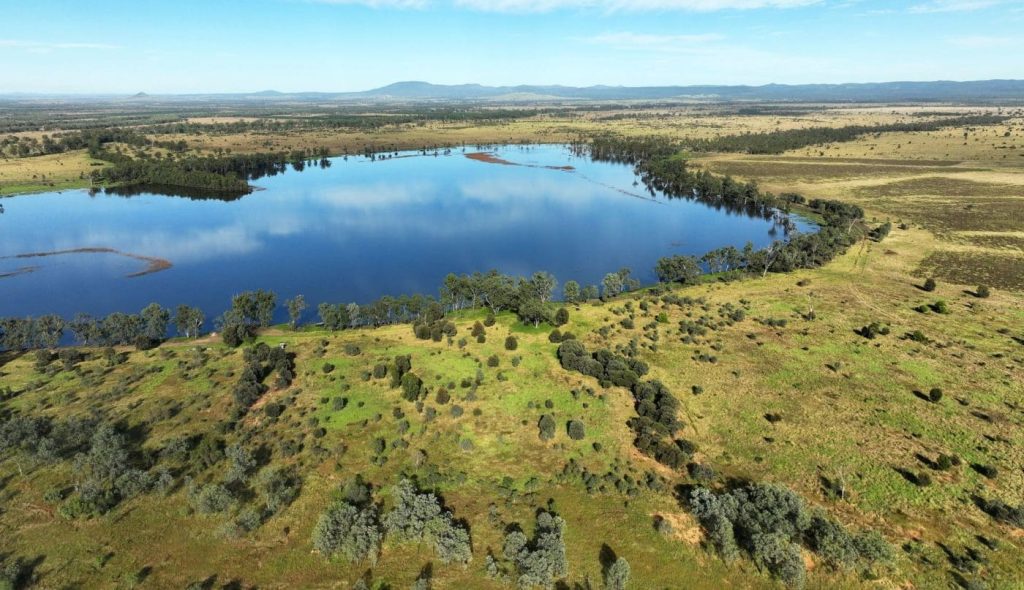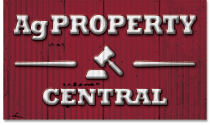
IN our final weekly property review for the 2024 year, three experts from rural property marketing agencies reflect on the year that was, and what lies ahead.
Mark Barber is in charge of agribusiness investment services for Elders. He said 2024 was generally a challenging year for rural property sales.
“Livestock prices had severely declined in late 2023 and were slow to recover in the early part of the year, seasonal conditions in the south were poor, and there was no clear direction on interest rates,” Mr Barber said.
These influences shook confidence generally and led to buyers being cautious.
“As the year progressed, livestock prices improved and there were mostly good to average seasonal conditions in New South Wales, Queensland and parts of Western Australia.”

Mark Barber
Mr Barber said good quality properties in sought after areas sold well, albeit with more time on market.
“Family farmers with robust balance sheets were strong competitors, but finance took longer to secure where needed. On the other hand, corporate investors were successful in raising capital, but high property values made it difficult to hit their return hurdles.”
Mr Barber identified the Ray Scott Pastoral Co portfolio as the standout livestock sale in 2024.
Central Queensland families (mostly neighbours or near neighbours) paid well in excess of $150 million for the sweep of properties spanning some of the most productive areas of the state.
In May, the Mt Gambier-based Scott family announced it was selling the Queensland productive vertically integrated beef enterprise.
Acquired over several generations and strategically expanded over 20 years, the aggregation features geographic and climate diversity, with access to live export, feedlots and beef processing.
In total, the seven properties covered 107,503ha from St George in the south to Charters Towers in the north.
All were described as high quality, productive assets extensively pasture improved and offering beef breeding and finishing and extensive dryland farming.
Mr Barber reported high levels of interest, strong across all the assets, particularly for the Fairfield Aggregation at Bauhinia.
“This led to strong competition from locals who were looking to build out their holdings.”
At $49 million, Fairfield Station was one of the largest sales of the year in Queensland and Kurrajong Park was the highest rate per hectare in Queensland for the year, for larger assets.
All of the Fairfield Aggregation was either sold at auction, contracted on the day or offers accepted within a few days of the auction.
Mr Barber said large scale properties in sought after areas sold well in 2024, which was replicated in other regions across the Elders network.
“The other standout sale was Yeeda and the Kimberley Meat Co (KMC). These assets were acquired by Alberta Investment Management Corp through its Australian manager, New Agriculture.”
“This was a satisfying sale as it was sold to buyer developing a large-scale beef enterprise in the Kimberly and will assist with the growth of the wider northern beef industry,” Mr Barber explained.
In August, Canadian super fund manager AIMC paid more than $60 million for the vertically integrated beef enterprise.
It consisted of the adjoining 475,617ha Yeeda and Mt Jowlaenga Stations (known as the Yeeda Aggregation), the Kimberly Meat Co Abattoir (KMC), the Kimberley Properties (KPP) eight residential properties in Broome and Derby, associated plant and equipment and a conditionally registered HIR carbon project.
While administrators KordaMentha confirmed a walk-in walk-out purchase price of circa $55m including 13,800 head of cattle (counted in partial muster in Oct 2023), more than 30,000 head of cattle were eventually mustered, and it is understood AIMCo paid more than $60m for the entire portfolio.
As Mr Barber mentioned above, Central Queensland’s Kurrajong Park (part of the Ray Scott Portfolio) was the highest rate per hectare for larger assets in Queensland for 2024 achieving $8063/ha bare.
Representing some of the best country in the Bauhinia district, the 3237ha sold under the hammer in November for $26.1m to nearby landholders Rob and Annie Donoghue.
2024 buyers
Mr Barber said the most active buyers in 2024 were larger family farmers who, with strong balance sheets from recent property price appreciation, were competitive for the right asset.
“Institutional and corporate investors, particularly from North America and Europe, were active but often found the elevated prices challenging when calculating their required financial hurdles,” he said.
However, further reductions in the Australian dollar against the US dollar could encourage more offshore buying.
What lies ahead?
In 2025, Mr Barber expects similar conditions to those experienced in the second half of 2024.
“If trading conditions remain the same, I would expect to see property prices hold firm with some strength in Victoria and South Australia – if there is a good autumn break.”
“Australian agriculture is still a good investment. It offers a secure capital and a reasonable return. Yes, there has some been some volatility in commodity prices and seasonal conditions, but the low property turnover shows farmers remain confident.”
Mr Barber said key drivers in 2025 were likely to be the impact on commodity prices under the new United States President, as well as interest rates and seasonal conditions.
“Australian agriculture will keep an eye on the impact on commodity prices if the US impose tariffs.”
As reported earlier on Beef Central, Donald Trump foreshadowed on day one of his presidency that he will slap China, Mexico and Canada with hefty new tariffs in a bid to force them to crack down on illegal immigration and drug smuggling into the US.
“China is one of the biggest importers of Australian commodities and imposing tariffs could slow growth and Chinese demand. With property prices and commodity prices closely correlated, a contraction in commodity prices could impact confidence and possibly property values,” Mr Barber said.
Danny Thomas, LAWD
During 2024, LAWD senior director Danny Thomas noticed a widening in the gap between institutional and non-institutional (family farm) transactions, saying it was much tougher to sell properties in the sub $40m price bracket.
“It has been a challenge taking a property to market in a district where there is an absence of strong neighbours or nearby larger producers looking to expand, and then finding the right buyer to support existing levels of value for family farms,” Mr Thomas said.

Danny Thomas
Across some regions there had been a price adjustment, while other regions had held firm levels.
“Demand is still strong for properties above $40 million, particularly for high quality assets where institutions have already invested, including the New South Wales’ Riverina, north along the Newell Highway and into the Northern Rivers,” he said.
“Areas that have been drier have been more difficult to move, especially Tasmania, western Victoria and south-east South Australia,” he said.
When it comes to large family farmers, Mr Thomas classified 2024 as a quieter purchasing year.
“Mostly, they want to buy with debt and the numbers have been difficult to stack. As a result, some backed off due to higher interest rates, others had completed deals the previous year and a number of producers were consolidating.”
Mr Thomas identified the Lachlan Valley region, south of Forbes in central western New South Wales, as particularly active from the end of last year to the start of this year.
“Prices for those irrigation areas, offering both groundwater and surface water, have been very strong and represent value for money compared to the rest of the market.”
Mr Thomas said the Sunshine Farms Aggregation was a great deal.
In March, the 14,075ha of irrigated and grazing country across five holdings near Forbes was offloaded by the AAM Investment Group and sold to Nuveen for $96m including 14,766ML of water entitlements.
The aggregation has high-quality clay loam soils growing cotton, wheat, barley, faba beans and fodder to support beef, wool and prime lamb production.
Mr Thomas said the Sunshine sale followed a series of other regional (Lachlan Valley) deals negotiated in 2023 that, combined, achieved in excess of $200m over a 12-month period.
- August 2023 – The highly productive irrigated and dryland cropping and grazing opportunity Jemalong Station was purchased by Lawson Grains for around $85m. The 13,498ha produces high value crops including cotton, winter cereals and oilseeds, fodder, beef cattle, wool and lambs.
- November 2023 – 3786ha blue-ribbon irrigation enterprise Fairholme Aggregation was purchased by agricultural asset management company Impact Ag for more than $30m including extensive water entitlements.
- March 2024 – 14,438ha Borambil Station, near Condobolin, was purchased by two local producers for a combined $43.57m (excluding the 3500ML of water entitlements). With an estimated carrying capacity of 40,000DSE, the aggregation offers sheep and lamb production, backgrounding cattle and dryland and irrigated cropping.

Central Queensland country sold as part of the Ray Scott portfolio
Mr Thomas also singled out the Ray Scott Portfolio as the standout livestock property sale for 2024.
“The sale showed the strength of Queensland cattle families and the sophisticated way they are looking to expand their operating footprint with an eye to finishing cattle closer to the end user.”
“The break-up of this portfolio provided a number of buyers the opportunity to make a material change to their businesses,” he said.
What lies ahead?
While the 2024 property market drew breath, Mr Thomas expects 2025 will be very busy.
“It will be a step change. Increasing institutional activity will result in a much busier market, as more deals are completed. A wall of overseas capital is coming into Australia from mostly North America and Europe, with next to no activity out of China.”
In terms of North America and Europe, Australia represented good value for money, particularly given the exchange rate, Mr Thomas said.
“In addition, the nature-based solutions market is dragging more money into Australia. People can access carbon credits and biodiversity offsets to meet some of their investment requirements around sustainability.”
“If more activity is met with less supply, then property prices could rise. However, the current pent-up supply means the market and values will track sideways for the time being.”
Mr Thomas believes the balance of the market, the family farms, will kick in again during 2025.
Jesse Manuel, Colliers Agribusiness
Jesse Manuel, national director of transaction services for Colliers Agribusiness, said despite lower transaction volumes, while sellers and purchasers adjusted to the new environment of the higher cost of debt, inquiry remained strong throughout the year.
“At the pointy end of the sale process, particularly in the second half of the year, there have been increased levels of competitive tension, especially in regions where recent sales have occurred. This has allowed buyers and their financiers to get comfortable with where values sit.”
The recent sale of the 4300ha Fairview near Lucindale in South Australia was a tremendous vote of confidence in the southern Australian market for livestock properties, according to Mr Manuel.
“The property was put to market in 2023 in the first spring selling season after the interest rate peak and a correction in red meat prices. The market was ultra cautious, with buyers uncertain about where values would settle and limited sales evidence under an adjusted environment.”

Jesse Manuel Colliers International
Mr Manuel said once livestock prices lifted and interest rates remained steady, strong inquiry returned and Fairview, comprising six holdings, was transacted in one-line.
Mr Manuel said the sale of the 3345ha Keilira Station, also in South Australia’s south-east, was a standout.
The iconic sheep and cattle station remained in McBride hands after the AJ & PA McBride family company, one the country’s biggest wool producers, purchased it from a partnership of five family members for an undisclosed price.
In regions that remained tightly held during and since the peak of the market in 2022, Mr Manuel said there had been some standout sales where pent-up demand has outweighed supply.
“Quality assets in Central Queensland and also Central Australia have been examples of this. CQ is certainly one region where there has been both a reasonable supply of properties and sufficient depth in the market.”
2024 buyers
Mr Manuel said the 2024 buyer profile continued to be evenly divided between private families and the corporates and institutions.
“Traditionally, when the cost of funding increases, institutional investors with cash become the most active buyers in the market. However, family farming operators have also remained active because they are nimbler when it comes to undertaking due diligence.”
Mr Manuel said one noticeable change in 2024 was the increase in enquiry and purchasing mandates from off-shore high net-worth individuals.
“That’s especially so from the United States where the exchange rate makes for a very compelling case for investment in Australia.”
What lies ahead?
Mr Manuel said different regions were at varying stages of the property price cycle, depending on what the supply situation has been doing over the past 12 to 18 months.
“The most positive outlook is for properties located in the most reliable rainfall regions and an interest cut would certainly help,” he said.
Looking at the 2025 rural property market, Mr Manual said the supply and demand dynamic was critical.
“Irrespective of the broader macro-economic conditions, many primary producers have good equity in their assets and those who have wanted to expand haven’t been able to due to the lack of opportunities coming to market.”
He believes this pent-up demand will translate into some positive sale results across the country.
This is Beef and Sheep Central’s final weekly property review for 2024. I wish all readers and our property industry contacts across Australia, a Merry Christmas and a safe and happy New Year. Our weekly property reviews will return in February 2025.
In the meantime, readers may be interested in perusing our “Properties for Sale” listings or our “Recent Property Sale Results” – both featuring easy-to-use search functions – Linda Rowley, property editor.
